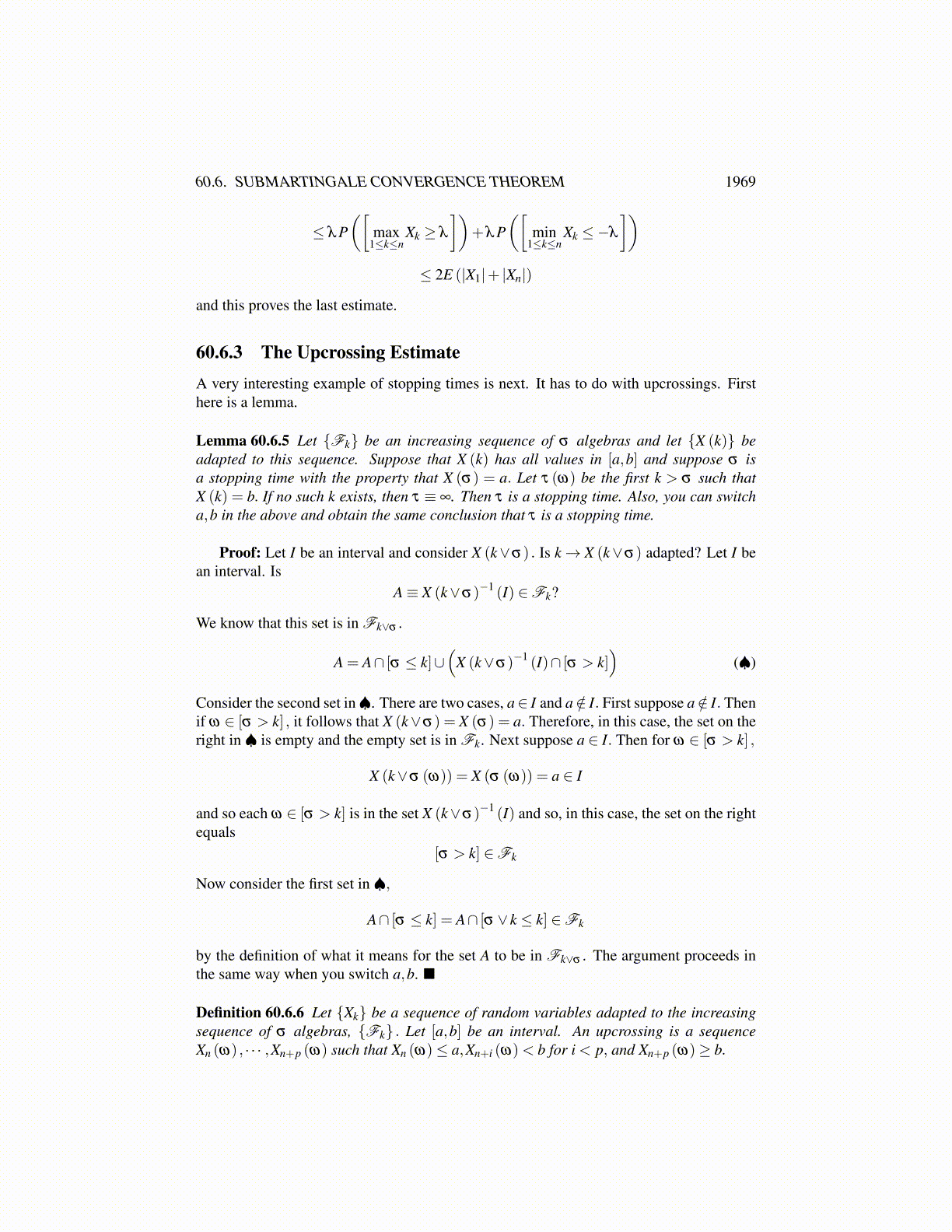
60.6. SUBMARTINGALE CONVERGENCE THEOREM 1969
60.6.2 Maximal InequalitiesNext I will show that stopping times and the optional sampling theorem, Lemma 60.4.3,can be used to establish maximal inequalities for submartingales very easily.
Lemma 60.6.3 Let {X (k)} be real valued and adapted to the increasing sequence of σ
algebras {Fk} . LetT (ω)≡ inf{k : X (k)≥ λ}
Then T is a stopping time. Similarly,
T (ω)≡ inf{k : X (k)≤ λ}
is a stopping time.
Proof: Is [T ≤ p] ∈Fp for all p?
[T = p] =
∈Fp−1︷ ︸︸ ︷∩p−1
i=1 [X (i)< λ ]∩
∈Fp︷ ︸︸ ︷[X (p)≥ λ ]
Therefore,[T ≤ p] = ∪p
i=1 [T = i] ∈Fp
Theorem 60.6.4 Let {Xk} be a real valued submartingale with respect to the σ algebras{Fk} . Then for λ > 0
λP([
max1≤k≤n
Xk ≥ λ
])≤ E
(X+
n), (60.6.12)
λP([
min1≤k≤n
Xk ≤−λ
])≤ E (|Xn|+ |X1|) , (60.6.13)
λP([
max1≤k≤n
|Xk| ≥ λ
])≤ 2E (|Xn|+ |X1|) . (60.6.14)
Proof: Let T (ω) be the first time Xk (ω) is ≥ λ or if this does not happen for k ≤ n,then T (ω)≡ n. Thus
T (ω)≡min(min{k : Xk (ω)≥ λ} ,n)
Note[T > k] = ∩k
i=1 [Xi < λ ] ∈Fk
and so the complement, [T ≤ k] is also in Fk which shows T is indeed a stopping time.Then 1,T (ω) ,n are stopping times, 1≤ T (ω)≤ n. Therefore, from the optional sam-
pling theorem, Lemma 60.4.3, X1,XT ,Xn is a submartingale. It follows
E (Xn) ≥ E (XT ) =∫[maxk Xk≥λ ]
XT dP+∫[maxk Xk<λ ]
XT dP
=∫[maxk Xk≥λ ]
XT dP+∫[maxk Xk<λ ]
XndP